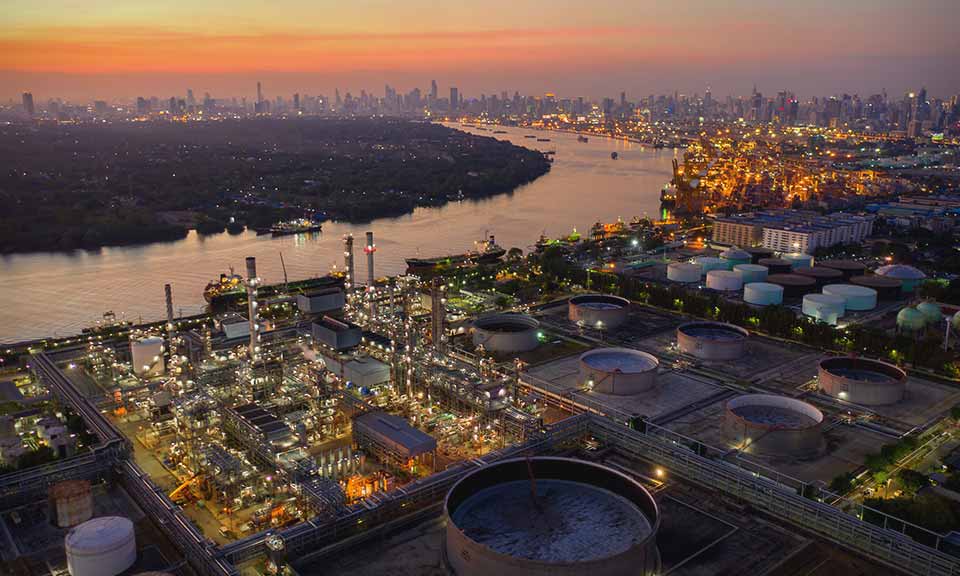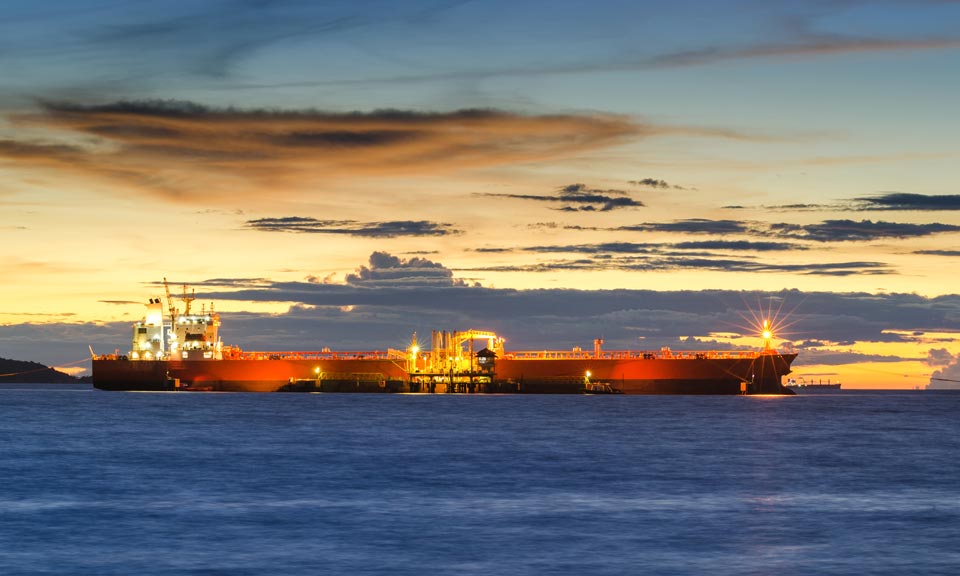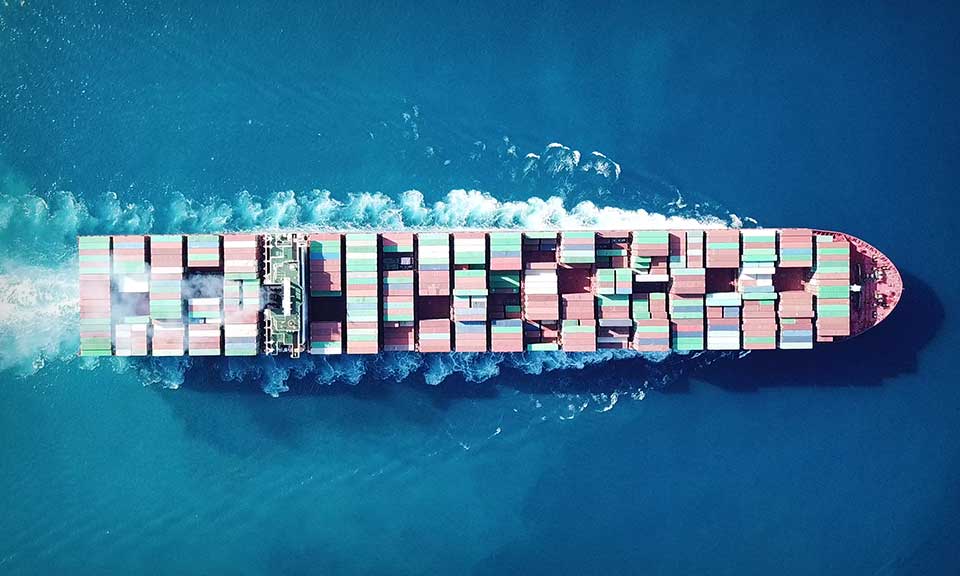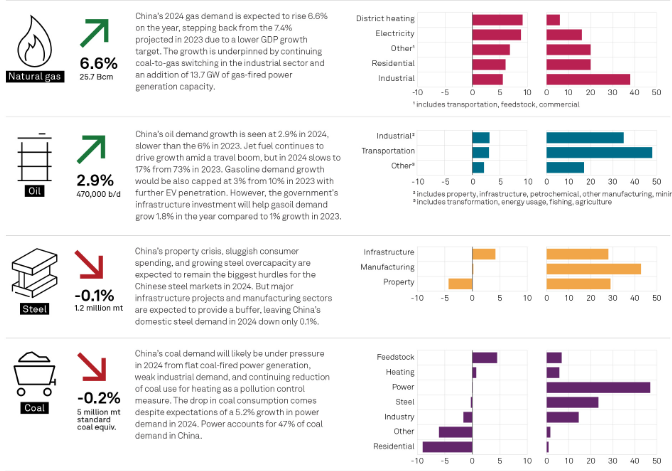EU ban on Russian oil product exports will reconfigure markets, change trade flows: IEA

The EU's ban on Russian oil product exports on Feb. 5 will transform markets and change trade flows in a manner more complex than the impact of the sanctions on seaborne Russian crude that came into force on Dec. 5, chief energy economist at the International Energy Agency said Jan. 11.
"We need to be very watchful because the reconfiguration in global trade implicit in that oil product ban is going to be significantly more complex than what we have seen already on the crude side," Tim Gould said at the 13th Global UAE Energy Forum organized online by Dubai-based Gulf Intelligence.
"When it comes to products, it's a more complex situation because as we are all aware, China and India are both oil product exporters, so you are not going to have the same, in a sense, safety valve for oil products as you do for crude."
The G7 slapped a $60/b price cap on Russian crude alongside EU's own embargo on seaborne Russian crude exports on Dec. 5 in response to the invasion of Ukraine.
"We are going to need to have a very complex reconfiguration of flows also in the Atlantic Basin with Europe taking more from Middle Eastern suppliers and from North America, and then potentially Russian oil product exports finding a home in parts of Latin America or in Africa," Gould said.
"None of that is simple, there are quality specification issues. There are all sorts of tankers and storage issues that would make that very complicated."
European refiners turned to crude grades from Norway, the US, Saudi Arabia, Guyana and Azerbaijan in 2022 to plug the growing gap left by Russian imports sidelined by Western sanctions on Moscow, according to tanker tracking data.
Russian seaborne crude imports into the EU, Norway and the UK shrank by 80%, or 1.36 million b/d, in November and December compared to pre-war levels of 1.71 million b/d, according to data from S&P Global Commodities at Sea.
The IEA is forecasting Russian output will fall by 1.4 million b/d in 2023 due to the impact of EU sanctions and the G7 price cap.
"When we look at oil markets, it is undoubtedly true that Russian production and exports have been more resilient than we initially expected, but of course there are big changes afoot," Gould said.
"It feels unlikely that we will get back to the way things were before in terms of Russia's relationship or position in the international energy world."
Analysts at S&P Global Commodity Insights expect only minimal impact from the West's seaborne crude sanctions on Russian output. Russian supply losses could peak at 930,000 b/d below pre-war levels in March due to pending sanctions on fuel exports before production rebounds 400,000 b/d by the fourth quarter of 2023.
Russia estimates that its oil output may fall 5%-7% in 2023 as a result of the sanctions.
The G7 price cap is another factor that will impact Russian exports in 2023, Gould said.
"We are watching very closely to see the extent to which traders and shippers are incorporating that (G7 price cap) into their decisions already for crude in December," Gould said.
"There is a large degree of uncertainty how this plays out, but I think certainly it is going to be a big factor in the markets in 2023."
Other wild cards in 2023 are the oil demand outlook as a result of China's lifting of COVID-19 restrictions despite a resurgence of the virus and the shape of the global economy, he added.
The IEA expects global oil demand to grow 1.7 million b/d to 101.6 million b/d in 2023, with nearly half of that increment coming from China. Most of the 820,000 b/d oil demand growth in China in 2023 is expected to come in the second half of the year.
The IEA is also keeping the release of oil from strategic stocks as an option in 2023, Gould said.
In 2022, the US initiated the largest drawdown in the history of its Strategic Petroleum Reserves, injecting 905,000 b/d into the market from mid-April through October, with additional drawdowns by other IEA nations raising global SPR flows to about 1.4 million b/d over the same period, according to S&P Global.
The Joe Biden administration announced the SPR drawdown as it sought to shore up global oil supplies, help Europe curb its dependence on Russian oil imports, and ease domestic energy prices contributing to the highest US inflation in 40 years at the time.
"There are still substantial stocks available to IEA member countries that can be deployed in case of necessity, and you can imagine that we will continue to keep a close eye on market developments and potential disruptions this year," Gould said.
"That part of the arsenal is still very much intact. Some countries will look to replenish those stocks as and when it's prudent to do so."

News
Russia, one of the world’s largest oil suppliers, has increasingly turned to non-Western firms to transport its crude to overseas buyers during its ongoing war with Ukraine . With a dual goal of undermining Russia’s war chest without creating significant disruptions to global supplies amid inflation pressure, G7 countries and their allies have banned tanker operators, insurers and other services firms from facilitating seaborne Russian crude exports unless the barrels are sold for no more than $60/b. The price cap regime, which came into force Dec. 5, 2022, does not directly cover tankers flagged, owned and operated by companies outside the G7, the EU, Australia, Switzerland and Norway, and not insured by Western protection and indemnity clubs. While such ships tend to be older and less maintained, their share in Russia’s crude exports market has been rising in recent months amid strengthening prices of Urals -- the OPEC+ member’s flagship crude grade -- and tightening sanctions enforcement by the West. Non-price-capped tankers have a larger market share in shipping Russia’s Pacific crude exports, according to analysis of S&P Global Commodities at Sea and Maritime Intelligence Risk Suite data. Crudes such as Sokol, Sakhalin Blend, and Eastern Siberia–Pacific Ocean grades are more often involved in these trades than Russian barrels from Baltic or Black Sea ports like Urals. Tanker operators in Greece, Europe’s top shipowning nation, managed to keep their traditionally strong market position in Russia in the first few months since the price cap took effect before giving ways to their peers in the UAE, Russia, China and Hong Kong. (Latest update: April 5, 2024)

News
Red Sea shipping volumes have slumped more than 60% since November as vessels opt for the longer Cape route to avoid Houthi attacks. But even as the severity of the attacks mounts, freight rates have retreated from recent highs and oil-on-water may have peaked as trade flows adjust. Click to see the full-size infographic

News
A series of attacks on shipping routes in the Red Sea has so far spared oil supplies from witnessing major disruptions, but oil importing countries are spending sleepless nights amid concerns that any escalation could potentially alter the situation drastically. Although the attacks disrupted container shipping lines, oil shipments remain largely stable. However, concerns stem from the fact that supply chains will likely have to adjust very quickly should the disruption persist. As existing oil tanker contracts are often hard to change, some ongoing traffic will continue to move through Red Sea passages. Any new insurance issued for Red Sea routes could add about $1/b or more to voyage costs, according to S&P Global Commodity Insights. Re-routing will increase voyage length, in-transit times and fuel costs. In addition, it will result in higher vessel utilizations, which could lift global freight rates as well as widen inter-regional crude spreads. Surely, more ships are avoiding the Red Sea and Bab al-Mandab strait after a spate of attacks by Yemen's Houthi militants, threatening the strategic chokepoint for global seaborne trade. Many shippers, tanker owners and some oil companies have suspended voyages through the area. Russia's oil exports are particularly exposed to further Red Sea disruptions as Moscow ships some 80% of its crude to Asian markets. The attacks are expected to keep insurance costs high and prompt many tankers to take the longer route via the Cape of Good Hope, increasing ton miles and voyage durations, as well as tightening supplies and driving up freight rates. Even for the route via the Suez Canal, higher fees effective this year combined with a carbon tax for Europe-bound cargoes, will increase overall costs for charterers. Special report: Taking the long way around: Ships divert from the Panama Canal Although the rerouting of tankers away from the Red Sea, a major conduit for oil loaded in Russia, will surely raise shipping costs, the impact will be transitory. Roughly 7 million-8 million b/d of crude oil and products transited the Red Sea in recent months, according to S&P Global data. The market, for sure, will adjust to the changing flows, but the re-routing will lead to more oil on the water for a longer period of time. Russian crude shipments, should they avoid the Red Sea, are most affected due to a much longer haul to Asia around Africa. And amid tighter fleet capacity, lingering geopolitical conflicts are expected to boost tanker freight in 2024 despite ongoing OPEC+ supply cuts and a possible slowdown in oil demand growth. Implications for Asia As the biggest oil importing region, Asia may not witness dramatic changes to near-term oil supplies amid the ongoing Red Sea crisis, but refiners are chalking out alternative plans to ensure steady feedstock flows in the event of an escalation, a move that could inflate insurance costs and crimp refining margins. Although the region relies on imported oil for the bulk of its needs, the strategic push among Asia's top importers to massively diversify their import baskets over the years, as well as expand strategic storage, will come in handy to ensure smooth and uninterrupted flow of feedstocks. The Red Sea crisis has three aspects to it, as far as Asian oil flows are concerned. First, any escalation will create hurdles for Russian crude flowing to Asia, forcing buyers to look for substitutes from other origins. Secondly, for products moving from Asia to Europe, exporters are cautiously watching developments before taking the plunge. And lastly, longer routes have the potential to create incremental bunker fuel demand in Asia. Oil flows into China have not been impacted much by the Red Sea turbulence, as fewer cargoes are headed there on that route. In addition, the impact on Russian oil flows to India has been minimal, with no major diversions seen so far. Russia contributed over 35% of India's total crude imports in 2023, amounting to 1.7 million b/d, according to S&P Global data. Asian oil buyers are not necessarily concerned about Middle Eastern sour crude supplies for 2024, as major sellers, including Saudi Aramco and Abu Dhabi National Oil Co., fully respect Asian customers' demand regardless of their production cut commitments. However, the economics for cracking Middle Eastern sour crude have been deteriorating as the costs of bringing Persian Gulf barrels to the Far East have been rising with shippers demanding risk premiums, while tanker insurance costs are also trending higher. Asian refiners may even look at cutting Middle Eastern term contractual volumes and explore other options like African, US and South American crudes to maximize margins. US crudes, for one, is becoming increasingly more attractive for Asian refiners as the price of lighter and sweeter WTI crude is nearly on par with high-sulfur Persian Gulf grades on a delivered basis. Supply cushion The attacks in the Red Sea continued even after the US-led alliance took military action to establish deterrence. The risk of a wider escalation also increased with Pakistan's retaliatory strikes against Iran for alleged Iranian militant attacks in Pakistan. Overall, the geopolitical tensions in the Middle East have only increased over the weeks. However, oil markets have largely shrugged aside the risk due to a lack of physical disruption to oil shipments and weak macro fundamentals. But increased risk in the Middle East is probably putting a floor to oil prices amid weak demand. S&P Global expects fundamentals to improve in the second half of 2024 and prices to move up. Still, OPEC+ market management and the alignment between Saudi Arabia and Russia on OPEC+ policy will be critical for oil markets in 2024. S&P Global forecasts Platts Dated Brent to average $83/b in 2024 and $76/b in 2025. A sharper economic slowdown or disagreement within OPEC+ on production restrain remains the biggest risk for oil markets going into 2024. By: Sambit Mohanty, Editorial Lead, Asia Energy News, S&P Global Commodity Insights, S & P Global Commodity Insights Further reading: Red Sea shipping risk

News
China on Jan. 17 released its 2023 GDP growth at 5.2%, meeting its target set in March last year. S&P Global projects China’s 2024 GDP growth to slow to 4.7% after the country's annual economic conference held in December implied that any fiscal and monetary measures taken in 2024 were unlikely to be more aggressive than in 2023. This sets a weak tone for commodity markets in terms of end-user demand. Click here to see the full size version